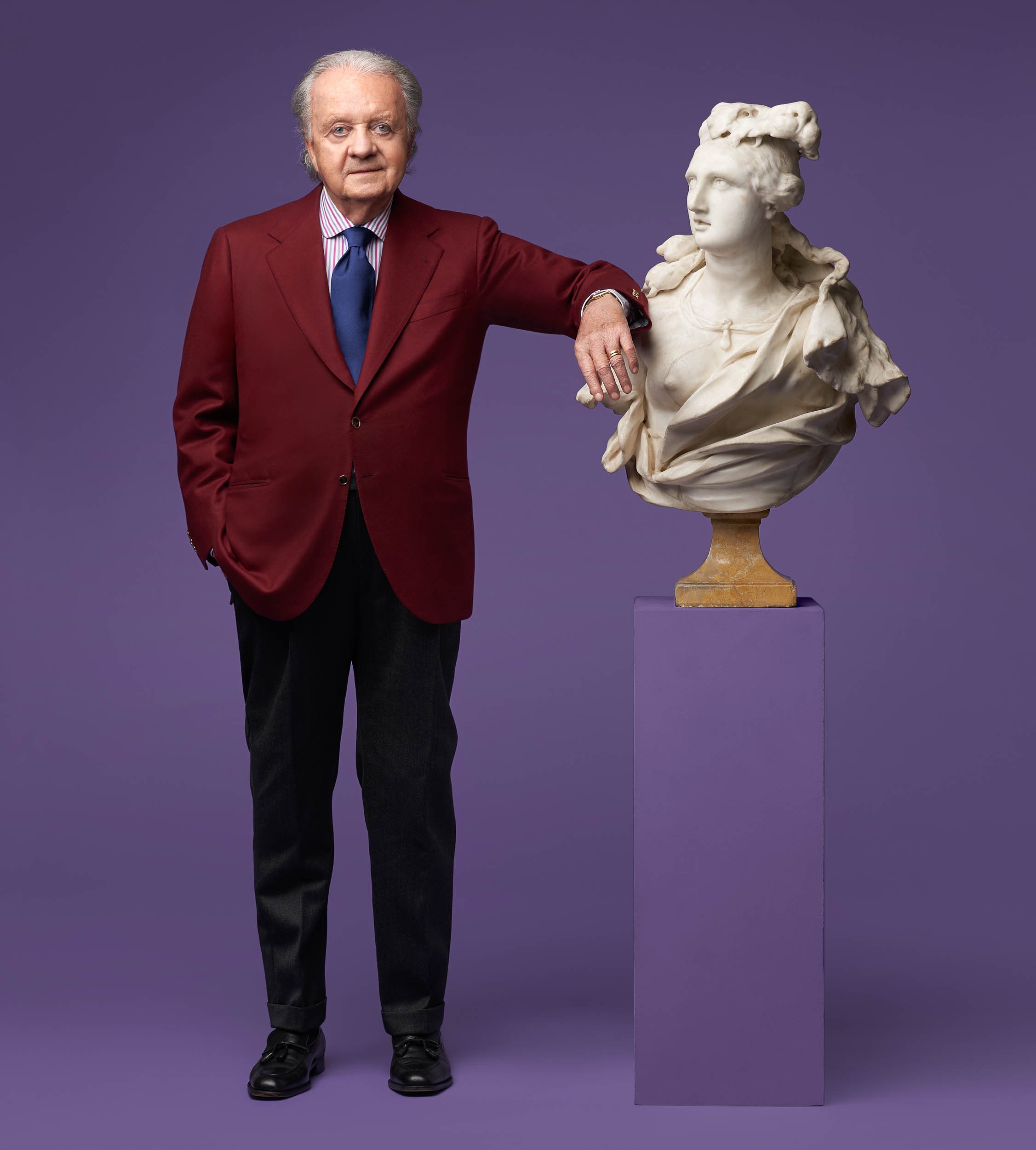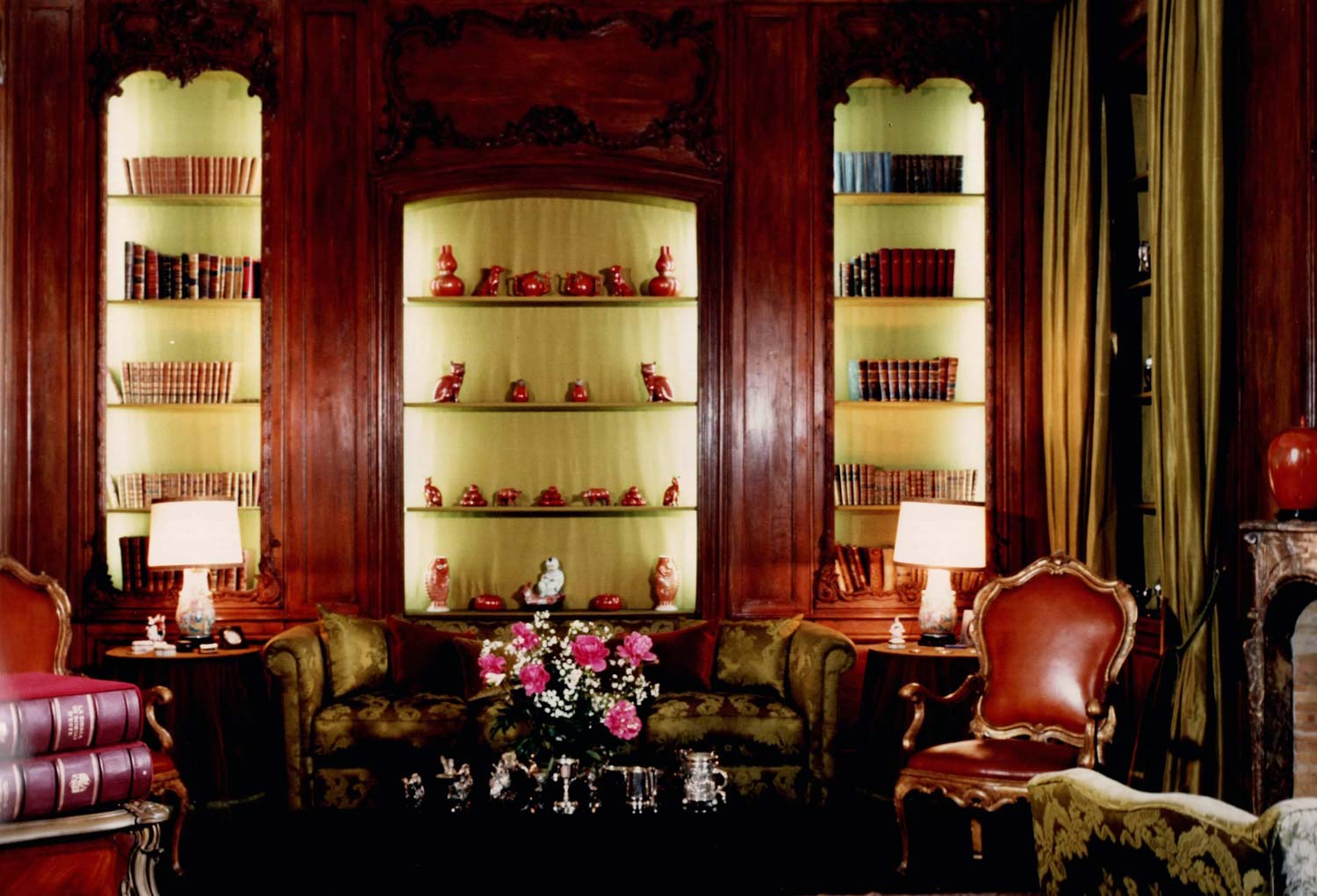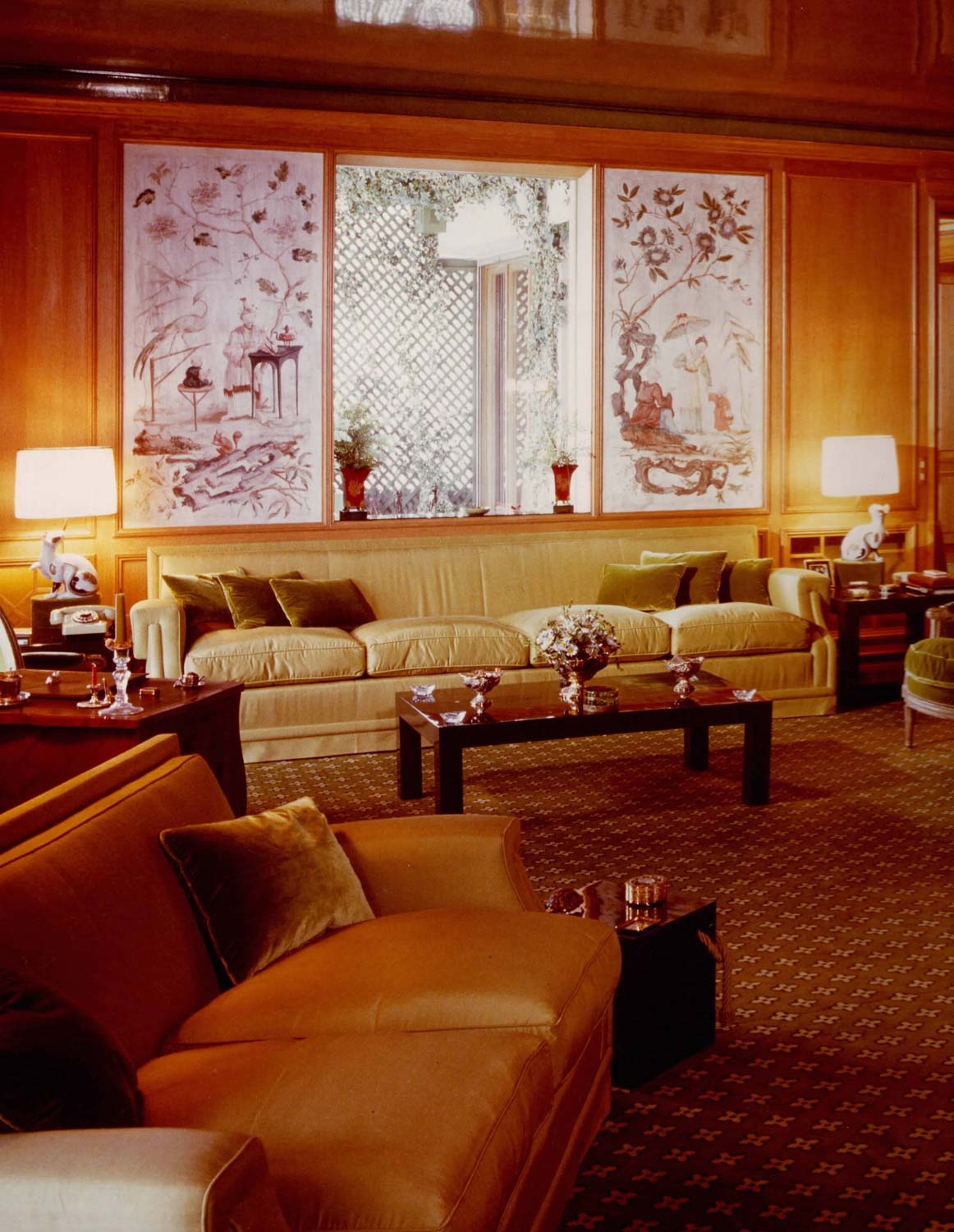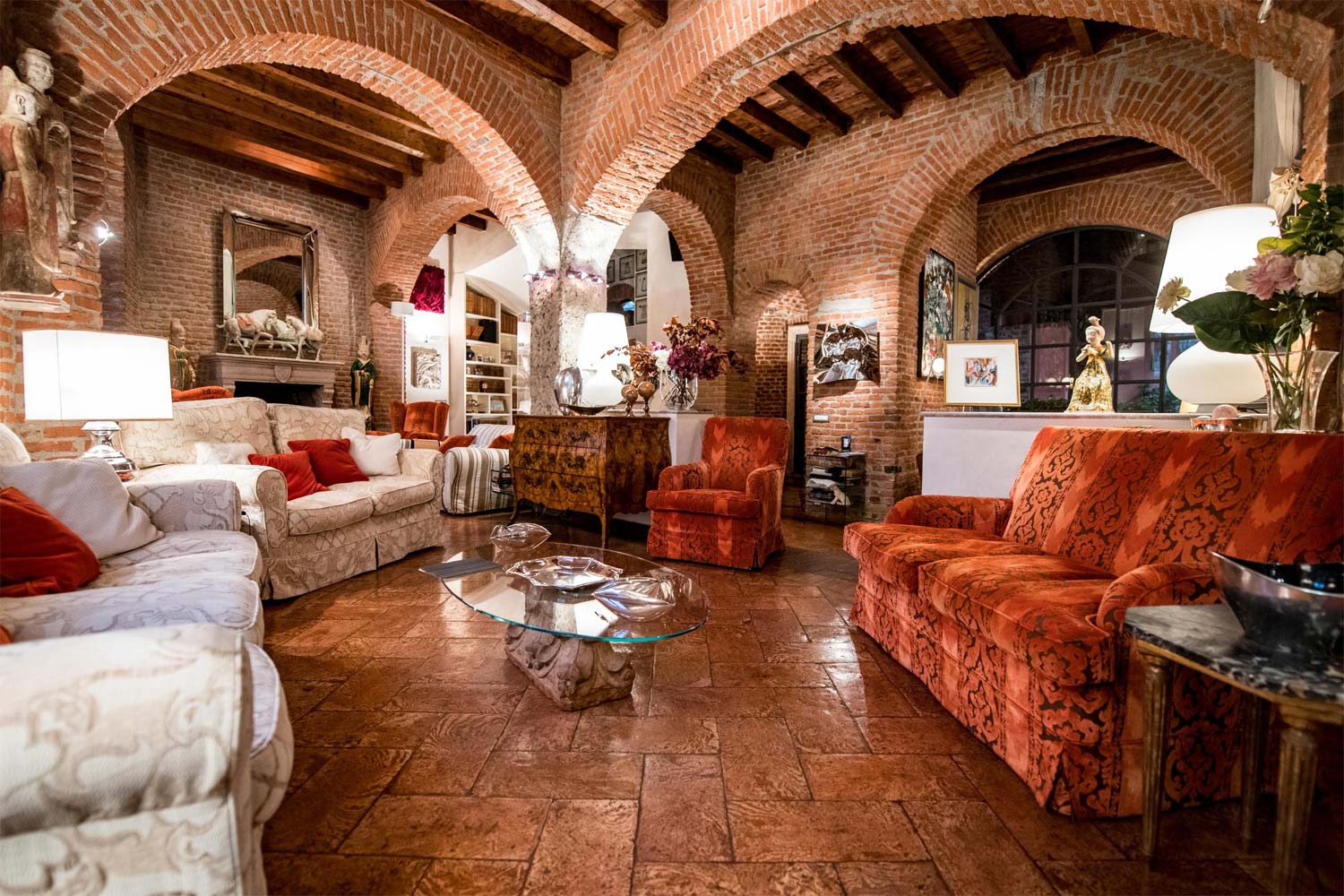A life spent furnishing the homes of Italians with taste and passion: Count Filippo Perego di Cremnago (Milan, 1930), one of the first and most important interior decorators in our country, has recently set up a foundation that bears his name and aims to promote the training and work of young people who intend to follow in his footsteps. November also saw the awarding of the first edition of the “Filippo Perego Prize,” intended for projects by Italian interior decorators under 40. A career between art and design, furnishing many of the country’s most beautiful homes, a patron’s spirit, clear ideas about the profession. In this interview, Filippo Perego tells us about his work.

FG. You say to introduce yourself that you “have always lived among antiques.” What do you prefer to call yourself? An interior decorator, a collector, a designer...? ?
CVT. I would say “interior decorator,” which is exactly what I have always done: I had the good fortune to be born in a house designed by Giuseppe Piermarini in the eighteenth century, and I have lived there all my life, surrounded by works of art, in a beautiful house, very ornate, with frescoed walls and ceilings and also furnished by Piermarini himself and then by the successors of the former owners, who have always been the Perego family. So I was very much influenced, unknowingly, by what was around me, because I spent my life around antique furniture and antique frescoes, so I was always led toward this taste. Then later on, even when I then finally embarked on my professional career, I continued to visit antique dealers, museums, palaces, castles... all old things because I always lived among old things.
What studies did you do and what training allowed you to begin your career as an interior decorator by getting to decorate the homes of many Italians, including famous ones?
I went to high school, and I didn’t want to go to university: when I finished school I inquired with friends about the possibility of being an interior decorator without any schooling behind me, and they all pushed me toward this profession because they thought I had good taste, that I knew how to move furniture, paintings, and moreover I was already giving some advice at the time, so they suggested I make it my profession. In Italy at that time there were no interior decorators, in Italy there were architects who made houses, and they would deliver the rooms ready, finished, but empty, and the owners, according to their taste, would call the artisans, explain to the artisans what they wanted, and they would furnish the houses themselves. There was no such thing as a decorator. At the same time, however, I came to know that in the United States the interior decorator was a state-recognized professional figure with all the relevant rules. So I left for New York, and when I arrived there, with the help of some friends, I came to know, mainly thanks to Princess Del Drago who was kind of at the head of the Italians in New York, an Italian interior decorator who had been working in America for many years. She had told him about me and he ended up taking me on as his assistant-I remained in his employ following him personally for quite some time. At that time this interior decorator was doing work in New York, Palm Beach and Miami, so he was going back and forth from New York to Miami: I was filling in for him to follow up on the work he ordered. I did all this for a few years, then at a certain time I decided to go back to Italy and started looking for work. One fortune I had was that my parents were very close friends with the architect Tomaso Buzzi, who was very much in vogue at that time. By the way, Buzzi, besides building mostly villas, was doing a lot of restoration of palaces and private houses: he was very well known, he took me under his hands and really taught me completely everything, starting with drawing, which I didn’t do in America (he would give me sketches that he did badly with measurements and I had to put the drawings down, and that’s where I started). I was in his employ for four years, I followed him everywhere and did the drawings: he corrected me, taught me, gave me ideas, and I must say, however, that many things that I learned from him, I had acquired on my own, without knowing it, by attending the house where I lived made by Piermarini. And so I had acquired the notions of proportions, materials and colors, without realizing it, simply because my house was made like that and the houses of my friends at that time there were all made like mine, so I always lived acquiring by myself a lot of knowledge that Buzzi taught me technically (for example how to draw them).

 Borgonuovo dwelling
Borgonuovo dwelling
 Dimora
Dimora Dimora
DimoraWhat do you think is the state of the profession today?
Today many people go directly to the organized stores that sell furniture, because it is the stores themselves that give advice on where to put them, on how to furnish the house. However, there are still a number of interior designers who work as I did, often without any qualifications, however, they work well, they get called, they are busy. However, that of the interior decorator is still a figure that the Italian state does not recognize. So we all worked and work according to our own taste and without predetermined rates (we always had to invent the figures). And then of course today’s taste is no longer the one I had, which was inspired by the ancient: now interior designers lean a lot on the modern (and, I must say, I’m beginning to understand it too). Now I no longer work due to age restrictions, however I still follow people who ask me for advice, so I happen to mix a lot of antique with contemporary art (paintings and sculptures but also furniture designed by designers). Also, to promote the profession, I recently created a foundation, the Filippo Perego Foundation for interior decorators, which also started an award for interior decorators. So, an award neither for architects nor for designers, but precisely for those who find an empty house and need to fill it. It is a path that started a few months ago, and we have already collected several proposals from people who are interior decorators. The first prize was awarded to three interior decorators in a ceremony that was held last November at Villa Necchi, a FAI property, because I have been involved in the maintenance of FAI properties for years and I do it for free, out of love, because I knew the president and the current president very well, and so I work for them with a lot of joy.
Why do you think antiques struggle to enter the homes of Italians today? Is it a problem of culture, of space, of price...? ?
It struggles a lot because taste has changed, because the figure of the designer has taken great hold and so young people are more likely to buy a chair designed by a famous designer of today rather than an antique piece, because at the level of materials there have been many innovations, for example concrete is used a lot (they even make concrete floors, which was absurd to me). And then you also have to think about the change in substances, which also affects wealthy people. Even wealthy people often have no household staff anymore and live in small houses. It tends to be that when a couple gets married they go and live in a two-bedroom, one-bathroom, one-kitchen-and-one-room apartment. And that’s it. And this is also true for the wealthy. And a house of this size usually gets furnished with modern items. Then there is also a great availability: those who want to furnish their homes with contemporary art find an endless amount of new galleries that have sprung up in the last few years, which are frequented by young people and not old people, and where young people can find things that are more understandable, precisely, by a young person living in the midst of a civilization that is very different from what it used to be.
You said earlier when that you and your colleagues were working to your own taste: however, are there ways and criteria in your work that are apart from taste? In other words, where did your work start from?
We would start from the floor plan of the apartment or villa that one bought: they would give it to me and I would decide with the owners, as the first thing, the changes I had to make on the rooms, on the walls, and I would have them done directly by a company that I followed. We would then reason about the materials. Then what is very important are the proportions, the perspectives, the symmetries, the height of the rooms, the vaults (if they are there, and if they are not there you create them with small bevels in the corners of the walls, so the ceilings will give the impression that the room is higher than it is, because the bevel raises the effect of the height of the room). On this basis you then work to your own taste.

 Dimora
Dimora


Some of the houses that you furnished were characterized by the research of the furnishings, and by their quantity, it seems to be inside Wunderkammer, inside time capsules. Would you continue to furnish like that today?
No, absolutely not. I would still work with the usual proportions, but I would make everything much lighter. We used to fill the houses, all the corners, all the shelves, all the tables were filled with objects, with things, there were so many armchairs, so many chairs, so many beds. How many canopy beds we used to make, which are not made now! Here, all these I would not make today. Or rather, I would keep my rules and my taste but I would furnish rooms that were more bare, colder, less loaded, less full, whereas before they were rich and heavy. But here, though, I would go ahead and mix contemporary art with antique: I really like to put an antique dresser with Fontana’s painting on it, to say a random name, or a classic sofa with two contemporary chairs next to it, very few tables and very few decorative items. Also because, as I said, even wealthy people who can have amenities do not have staff to polish silverware, silverware that I could put on the tables, which I would no longer do today. As a result, today everything becomes simpler, more practical, more contemporary.
What do you think are some objects, or pieces of furniture that should never be missing in any home?
The living room should have a sofa, armchairs, a low table in front to rest the things one uses, beds should be bare and without canopies, they should have an upholstered, straight back, not an elaborate thing. Sofas and armchairs have to be comfortable, and then for paintings one has to follow one’s instincts, one has to figure out whether one likes or dislikes them... as far as I’m concerned, for example, I find that the modern painting leaning next to an antique piece of furniture creates a nice contrast. And then a very important thing, in whatever style the house is, is the lights. Lights are very important to give warmth to the house in the evening when one turns on the lights, and this is a very difficult study because one goes a little bit by instinct. For example, instinct says one needs three lamps in a room. One arranges them and then, however, one realizes that by putting a lamp in a certain place he has made a mistake and so he has to move it somewhere else. But lights for me are very important: light can solve rooms by itself, so one will need to choose it correctly, one can put spotlights in architectures, one can light with floor lamps with a stem, maybe steel, crystal, or with table lamps, with long folding lamps that one then shortens. Light is for me the most important thing.
A man like you, who still travels a lot will always be looking for new objects: do you change your home decor often?
I started out with family objects, namely eighteenth-century gilded console tables , which I would no longer put in today ... now I’m of an age and I don’t feel like putting my hands on the house, but if I did feel like it the console tables would be the first things I would take out, and then I would revise the whole context of the rooms. In my house the furniture I have changed it a dozen times over the times. Now, however, it’s going to stay as it is because I’m too old to set out to change it: the only thing I can do and am doing is to buy paintings, or make some myself, since I consider myself very good at painting. So I’m replacing all but one or two antique ones I have that represent characters from my family, and the others I’m replacing all of them. The same goes for the objects on the tables: I buy for example a nice box, a nice candlestick, Venini glassware that is very beautiful, I replace small things that do not involve changing the house and I can add and take away at will without altering the look of the house. For example, I don’t have to remove a library, the library stays in place. Then I can stick on it a painting I know, by Magritte, which I look at with more joy than a portrait of an old man in a velvet embroidered cloak.
The dwellings you have made are so unique that perhaps it might not be far-fetched to call you a furniture artist. Do you reflect yourself in this definition?
Yes!
Warning: the translation into English of the original Italian article was created using automatic tools. We undertake to review all articles, but we do not guarantee the total absence of inaccuracies in the translation due to the program. You can find the original by clicking on the ITA button. If you find any mistake,please contact us.